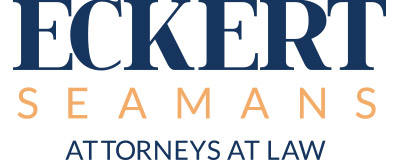An Employer’s Response to Coronavirus
March 3, 2020
As the novel coronavirus (COVID-19) continues to spread, employers must be proactive as well as cognizant of the applicable legal issues.
What is COVID-19?
A coronavirus is a virus that primarily causes respiratory illnesses. In December of 2019, the severe acute respiratory syndrome coronavirus 2 (SARS-CoV-2) emerged in China. This virus causes people to develop COVID-19. If a person catches it, he or she can experience coughing, fever, fatigue, and respiratory symptoms, such as shortness of breath and breathing difficulties. In more serious cases, the disease can cause pneumonia, kidney failure, and death. COVID-19 has symptoms that are similar to the flu or the common cold, but its mortality rate is higher. Current research suggests that people contract COVID-19 through contact with an infected person (someone sneezes or coughs on you) or surfaces (using the same keyboard or telephone) before or after that person exhibits symptoms.
On January 30, 2020, the World Health Organization (“WHO”) declared COVID-19 a public health emergency of international concern. The next day, the Secretary of the Department of Health and Human Services (“HHS”) declared this disease a public health emergency in the United States of America. As of the date of this Alert, COVID-19 is classified as an epidemic, but the WHO warns that it could turn into a pandemic. According to the WHO, an epidemic is “the occurrence in a community or region of cases of an illness… clearly in excess of normal expectancy” and a pandemic is a “worldwide spread of a new disease.”
What are some basic precautions?
Employers should make disinfectants available and should educate their employees on proper hygiene, such as washing their hands with soap and water, covering their mouths and noses when they sneeze or cough, standing more than 3 feet away from others who may be sick, staying home when they are sick, and disinfecting surfaces and devices after every use. Employers also should instruct ill employees to call their physicians and to follow their physician’s guidance. It is the physician’s duty to review the CDC’s protocol and to determine if the employee needs testing for COVID-19 or should be in self-quarantine for 14 days. Employers may ask for a doctor’s note regarding these determinations. Since testing is not universal, not all employees will be able to produce a doctor’s note, releasing them as “coronavirus free.” Employers should check their respective state health department(s) as the advice may differ based upon the number of cases experienced in the state and the readiness of the labs. Employers also may need to take an employee’s word and may need to let him or her self-quarantine if that person does not have a physician. Please see the list at the end of this alert for more suggestions.
What can you do under the ADA?
The Americans With Disabilities Act protects applicants and employees from disability discrimination, dictates the types of medical-related questions that employers may ask, prohibits employers from keeping employees from the workplace unless they pose a direct threat, and requires employers to provide reasonable accommodations. The Equal Opportunity Commission (EEOC) has published Guidelines on “Pandemic Preparedness in the Workplace,” which clarify what employers can do before and after COVID-19 is declared a pandemic.
Before such a declaration, employers need to engage in a case-by-case analysis to determine, among other things, what they can ask their employees about their health, if they can send employees with virus-like symptoms home, etc. After such a declaration, which renders COVID-19 a direct threat, employers can ask more direct questions about employees’ health/COVID-19, can send them home if they are symptomatic, and may need to offer reasonable accommodations, such as unpaid leave and teleworking. Due to the importance of COVID-19’s classification, employers must keep current with governmental directives to determine the proper nature of inquiries and personnel actions.
What about travel?
Employers should consider eliminating or limiting all non-essential business trips to countries or geographic areas with high incidence rates of COVID-19. They also can ask employees to postpone non-essential personal trips to such locations. Every day, the CDC and other government agencies are issuing or updating travel advisories. Employers should consult these Notices before making any decisions.
Employers also need to comply with the ADA with respect to travel. While COVID-19 is an epidemic, they can ask about employees’ exposure to the disease on a case-by-case basis. If it becomes a pandemic, employers have a greater ability to make inquiries regarding employees’ exposure. In both instances, employers may need to think about limiting travel as a reasonable accommodation based on an employee’s health condition.
How do you deal with absences?
Federal, state, and local laws may require some employers to grant employees paid or unpaid leave if they or their family contract COVID-19 and need to care for themselves or their family. Leave laws also might afford employees protections if the government declares a state of emergency and orders the mandatory closure of businesses. In addition, employees who volunteer as first responders or serve in the National Guard may be entitled to leave under federal, state, or local law if they are responding to a public health emergency in those capacities. In general, leave laws do not permit employees to take time off simply to avoid a disease.
What about unemployment compensation?
If employees lose their employment due to COVID-19, they may be eligible to receive unemployment compensation benefits depending on where they work and reside.
What about safety?
The General Duty Clause of the Occupational Safety and Health Act (“OSH Act”) requires employers to provide each worker with “employment and a place of employment, which are free from recognized hazards that are causing or are likely to cause death or serious physical harm.” The Occupational Safety and Health Administration (“OSHA”) does not have a specific standard that pertains to COVID-19; so, the General Duty Clause is controlling at this time. OSHA, however, has provided resources for employers regarding COVID-19: Resources and Additional Resources. OSHA also is encouraging employers to consult the standard that the California Division of Occupational Safety and Health has promulgated to protect workers from infectious diseases, which are transmissible by airborne exposure: Cal DIR – Interim Guidance.
Employers also must protect employees from exposure to certain hazardous chemicals hazardous. If employers disinfect their workplaces, they should see if a product contains toxic or hazardous substances or otherwise presents a chemical hazard requiring personal protective equipment, special handling, or notices to employees. Employers should know that the OSH Act protects employees against retaliation for raising safety concerns about the workplace. Finally, OSHA has advised that COVID-19 is a recordable illness if it is contracted in a job-related incident.
What are some best practices?
Due to the dynamic and evolving nature of COVID-19, employers should consider the following:
- Consulting with counsel to determine whether they need to provide leave or reasonable accommodations.
- Creating or updating their policies regarding leave/absences, working remotely, mandatory or voluntary closures, etc.
- Ensuring that they have accurate contact information for their employees and their employees’ emergency contacts.
- Using an e-mail or a text messaging service to share important and time-sensitive information with their staff, such as mandatory closures.
- Permitting their employees who are able to work remotely from home to do so for up to 2 weeks (or some other time period as recommended by public health directives), if they exhibit symptoms or think that they have come into contact with someone who has COVID-19.
- Encouraging their employees to call their health providers and to follow their instructions.
- Posting signs and distributing information to their employees about COVID-19, prevention practices, and where and how to seek treatment if they think that they might have symptoms.
- Educating their staff on the nature of COVID-19 to avoid potential stigmatization, misunderstanding, or overreactions. Informational videos that the CDC created are accessible by clicking on the following: CDC – Videos.
- Training their staff on proper hygiene, such as washing one’s hands with soap and water or an alcohol-based hand sanitizer or covering one’s mouth and nose when coughing or sneezing.
- Posting signs about proper hygiene practices in common areas, such as bathrooms, lunchrooms, and breakrooms. To obtain posters, visit: WHO – Washing your hands, CDC – Washing your hands; and WHO – Protecting Others.
- Sanitizing the workplace regularly or when there is a confirmed case of COVID-19.
- Providing hand sanitizer, tissues, masks, and no-touch receptacles for employees to use.
- After the declaration of a pandemic, encouraging their employees to notify their supervisor or Human Resources when they have symptoms so that they can take appropriate measures.
- Limiting the number of non-essential visitors, vendors, etc. at their workplace.
- Encouraging employees to use videoconferencing instead of traveling where appropriate.
- Developing a plan to continue the business, such as designating certain employees to fill in for their colleagues and supervisors, and using temporary workers for appropriate certain positions.
- Checking the WHO’s, HHS’s, and CDC’s websites for updates, announcements, and guidance. For further information, visit: WHO, HHS, CDC.
Employers should remember that it is not possible to predict what will happen with COVID-19 or how it will impact their organization. We, therefore, strongly encourage employers to prepare themselves, to be flexible, and to work with counsel as this situation develops.
Click here to view the downloadable PDF.
This Labor & Employment Legal Update is intended to keep readers current on developments in the law, and is not intended to be legal advice. If you have any questions, please contact the authors, including Derek Illar at 412.566.6771 or dillar@eckertseamans.com, Clare Gallagher at 412.566.2069 or cgallagher@eckertseamans.com, or any other attorney at Eckert Seamans with whom you have been working. If you have medical questions, contact a licensed physician or a public health specialist.



